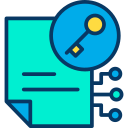Blueprint: Architecture and Data Flow
Define how HR persons, positions, organizations, and locations map to LMS users, groups, catalogs, and enrollments. Handle edge cases—contingent workers, dual roles, and leaves of absence. Create a data dictionary early, and invite feedback from HR operations and learning admins to avoid costly rework later.
Blueprint: Architecture and Data Flow
Batch processing is reliable for large nightly updates, while webhooks or event streams push changes instantly for transfers and terminations. Hybrid models combine both. Document latency expectations per data type, and ask teams to comment on which moments truly require real-time updates within your integration plan.





